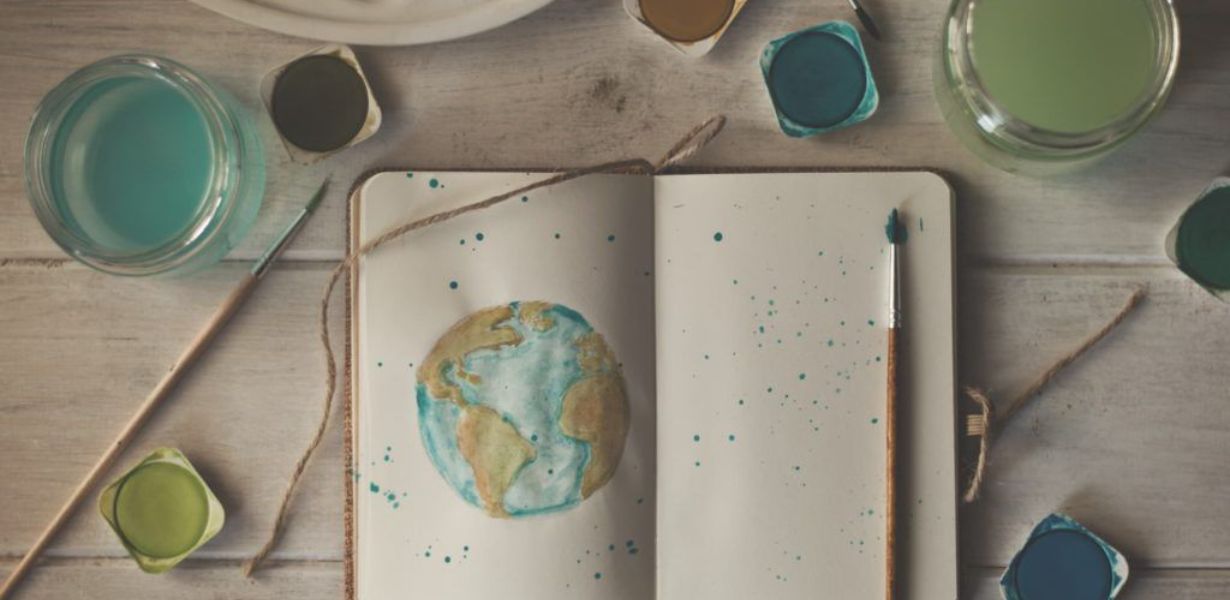
Eco-friendly Illustrations: Sustainable Materials and Techniques for a Greener Artistic Future
- Post
- August 7, 2023
- Illustrations, Web Design, Web Design Trends
- 0 Comments
In today’s fast-paced world, where environmental concerns are paramount, artists and designers are increasingly seeking eco-friendly alternatives to traditional art materials and techniques. Embracing sustainability in the realm of illustrations not only contributes to a greener future but also allows artists to create meaningful and impactful artwork. In this blog, we explore the various sustainable materials and techniques that pave the way for a more eco-conscious artistic journey.
Understanding the Impact of Traditional Illustration Materials
Traditional illustration materials often include paper, ink, paints, and other substances that may have adverse effects on the environment. These materials contribute to deforestation, water pollution, and greenhouse gas emissions during production and disposal. By recognizing the environmental impact of these materials, artists can take the first step toward adopting more sustainable practices.
Embracing Recycled and FSC-Certified Paper
One way artists can reduce their ecological footprint is by opting for recycled paper. This environmentally friendly alternative not only reduces the demand for new raw materials but also minimizes waste. Additionally, choosing Forest Stewardship Council (FSC)-certified paper ensures that the paper comes from responsibly managed forests, supporting sustainable forestry practices.
Water-Based Inks and Low VOC Paints
Water-based inks and low Volatile Organic Compound (VOC) paints are excellent alternatives to their solvent-based counterparts. These eco-friendly options emit fewer harmful chemicals into the atmosphere, promoting better indoor air quality and reducing environmental pollution. Furthermore, artists can experiment with plant-based inks, which offer vibrant colors while being environmentally benign.
Digital Illustrations and Their Green Advantage
In today’s digital age, artists can explore the world of digital illustrations, which have a significantly lower environmental impact compared to traditional methods. Digital artworks eliminate the need for physical materials, such as paper and paint, thus reducing waste and conserving resources. Moreover, the use of energy-efficient devices and renewable energy sources can further enhance the eco-friendliness of digital art.
Incorporating Natural and Biodegradable Pigments
Natural pigments derived from plants, minerals, and even insects are gaining popularity among environmentally conscious artists. These biodegradable pigments offer a wide range of colors and textures, enabling artists to create stunning illustrations without harming the environment. By choosing natural pigments, artists contribute to a sustainable art ecosystem that aligns with nature’s rhythm.
Harnessing Solar Power for Art Studios
Artists can take a step toward sustainability by harnessing solar power to meet their energy needs in their studios. Solar panels provide a renewable and clean energy source that reduces reliance on fossil fuels. By embracing solar energy, artists not only minimize their carbon footprint but also inspire others to adopt eco-friendly practices.
Sustainable Packaging for Artwork
The sustainability journey doesn’t end with creating eco-friendly illustrations. Artists can extend their green practices to packaging as well. Using biodegradable and recycled materials for artwork packaging helps reduce waste and supports the concept of a circular economy. It also communicates the artist’s commitment to environmental responsibility to clients and patrons.
Collaborating with Eco-Conscious Brands
Artists can make a more significant impact by collaborating with eco-conscious brands and organizations. Working with companies that prioritize sustainability can lead to unique opportunities and projects that spread the message of environmental awareness through art. Such collaborations can also enhance an artist’s reputation and reach a broader audience.
Engaging in Art Projects for Environmental Causes
Artists can leverage their creative skills to engage in art projects focused on environmental causes. Participating in initiatives like public art installations, workshops, and awareness campaigns can bring attention to critical environmental issues. Through their artwork, artists become ambassadors for positive change, driving collective efforts toward a greener future.
Nurturing an Eco-Friendly Art Community
Nurturing an eco-friendly art community fosters collaboration, knowledge-sharing, and support for sustainability initiatives. Artists can organize events, webinars, or social media campaigns that promote eco-consciousness among fellow creatives. Together, they can amplify their impact and inspire others to embrace sustainable practices in their artistic endeavors.
Final Words
In conclusion, eco-friendly illustrations offer artists a pathway to contribute positively to the environment while expressing their creativity. By choosing sustainable materials, adopting digital art, using renewable energy, and collaborating with like-minded brands, artists can make a significant difference in building a greener artistic future. Let us unite in our mission to create art that not only captivates the eye but also nourishes the soul and supports the planet we call home.
Commonly Asked Questions
1. How can I transition from traditional art to digital art for a greener approach?
Transitioning from traditional art to digital art is an excellent step toward a more sustainable artistic practice. Invest in a high-quality digital tablet and software, and familiarize yourself with the tools. By going digital, you reduce paper usage, conserve resources, and minimize waste while enjoying the versatility digital art offers.
2. Are there any eco-friendly framing options for artwork?
Yes, there are eco-friendly framing options available. Look for frames made from reclaimed wood or recycled materials. Avoid frames with toxic finishes or laminates that can harm the environment. Opt for glass alternatives like acrylic, which are more sustainable and shatter-resistant.
3. Can I create vibrant illustrations using natural pigments?
Absolutely! Natural pigments offer a wide range of colors, from earthy tones to vibrant hues. Experimenting with different natural materials will allow you to achieve stunning and unique results while staying true to your eco-friendly values.
4. How can I promote sustainability through my artwork?
Promoting sustainability through your artwork involves showcasing your eco-friendly process and materials to your audience. Engage in dialogues about your environmental commitment through social media, artist statements, and blog posts. By sharing your journey, you can inspire others to follow suit and make a positive impact.
5. What are some eco-friendly alternatives to traditional art brushes?
Consider using brushes made from sustainable materials like bamboo or recycled plastic. Eco-conscious brands offer brushes with biodegradable handles and synthetic bristles that mimic the feel of natural hair brushes without harming animal populations.



